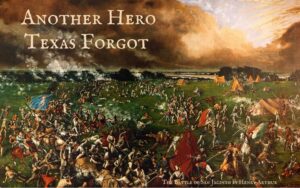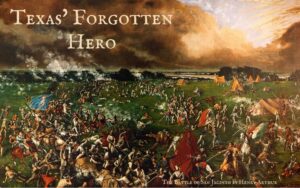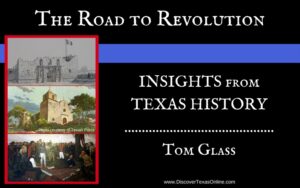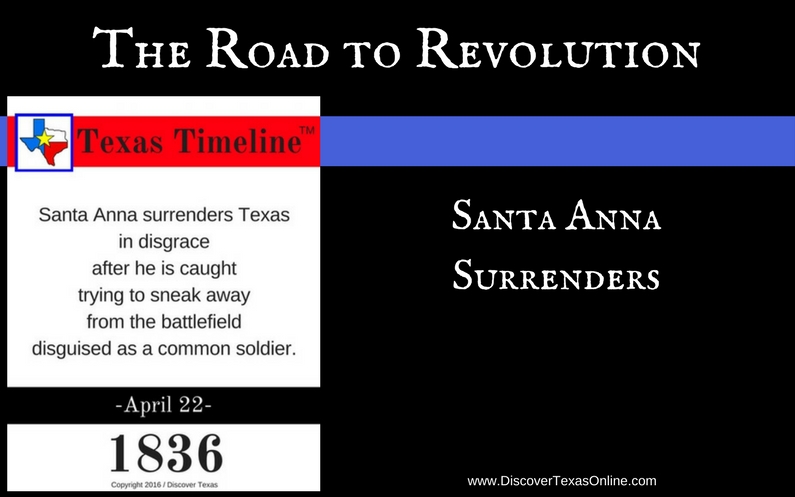
If I may be blunt, Santa Anna was not only a murderous and immoral loser but a coward as well.This painting of The Surrender of Santa Anna by artist William Henry Huddle has been on display in the first floor south wing of the Texas State Capitol since February, 1891. It depicts the scene on the morning of April 22, 1836–the day after Texas’ victory over Mexico at the Battle of San Jacinto–when Mexican General Antonio López de Santa Anna, wearing the uniform of a private soldier, was brought before Texas General Sam Houston as a prisoner of war. Houston, wounded in the battle, rested on a pallet under the oak tree while arranging an armistice with Santa Anna. To the right, seated on a log, was Erastus (Deaf) Smith, famous Texas scout. Notice the captured Mexican battle flags leaning against the tree. To the left and rear of Houston were his Secretary of War, Thomas Jefferson Rusk, standing next to Colonel Mirabeau B. Lamar. Over thirty other historical figures are represented in this painting.
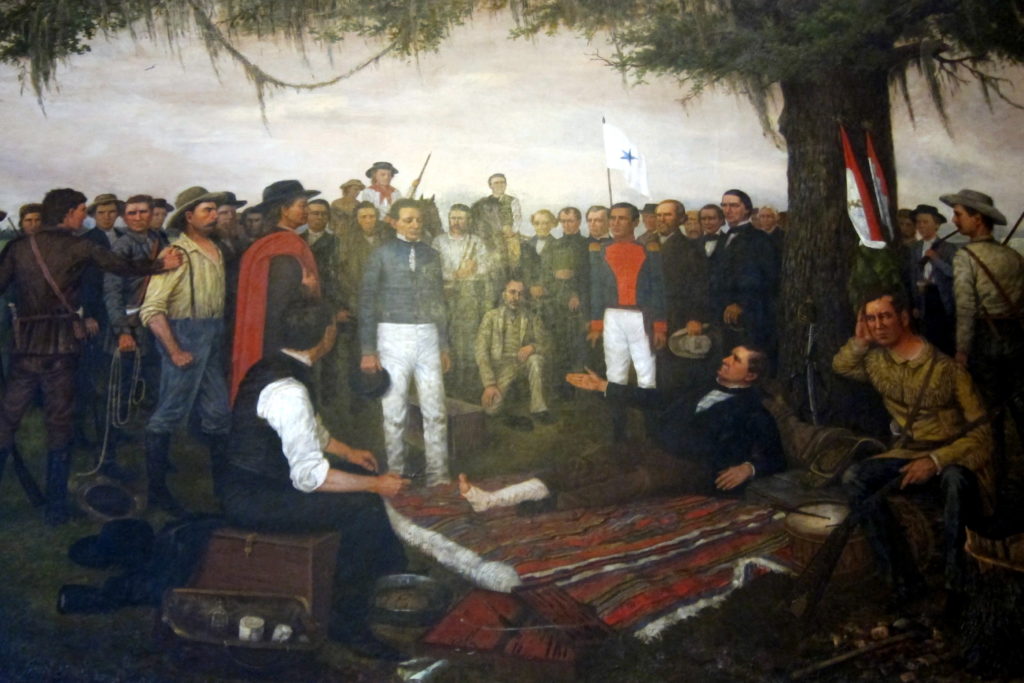
You know the story so far:
Santa Anna’s army marched toward Anahuac, burning Harrisburg on their way. Sam Houston’s army hurried to intercept him. On April 20 both armies arrived at San Jacinto.
Santa Anna expected Houston’s exhausted recruits to rest and regroup, but Houston decided on a surprise attack. At about 3:30 in the afternoon of April 21, while the unsuspecting Mexicans were taking a siesta, Houston led his 910 men with cries of, “Remember the Alamo! Remember Goliad!” They fired at almost point blank range, scattering the terrified Mexicans who had no time to group for battle.
The fight was over in eighteen minutes.
Here’s what happened next:
After the battle, Santa Anna could not be found. The next day, a Texas sergeant apprehended a Mexican in a common soldier’s uniform trying to sneak away under cover. (I consider myself blessed to know the great-great-granddaughter of the man who brought Santa Anna in!) As he brought his captive to General Houston, the other Mexican prisoners recognized him and began to shout, “El Presidente!” Santa Anna was forced to surrender in disgrace.
When called upon to surrender his sword, Santa Anna presented it to Sam Houston. If he sought to surrender with honor, general to general, the wounded Houston made his disdain clear by sending one of his privates to retrieve the saber.
Santa Anna’s legacy became a cautionary tale of what can happen when arrogance and cruelty build false confidence that lulls one into a lack of diligence. It always makes me think of Proverbs 24:32-34…
“When I saw, I reflected upon it; I looked, and received instruction. ‘A little sleep, a little slumber, a little folding of the hands to rest,’ then your poverty will come as a robber and your want like an armed man.“
The Battle of San Jacinto literally changed the world!
Historians list the Battle of San Jacinto as one of the top ten most decisive military engagements in world history. To understand why, we must remember that the territory Mexico claimed as Texas did not have the same boundaries then as now. The land he lost included not only what we now call Texas, but also all or part of Oklahoma, Kansas, New Mexico, Colorado, Wyoming, Arizona, Nevada, Utah, and California–nearly a million square miles of territory that eventually expanded the United States from coast to coast and constitutes one third of its present size in addition to adding natural resources that helped the U. S. become one of the most powerful and influential countries in world history.

